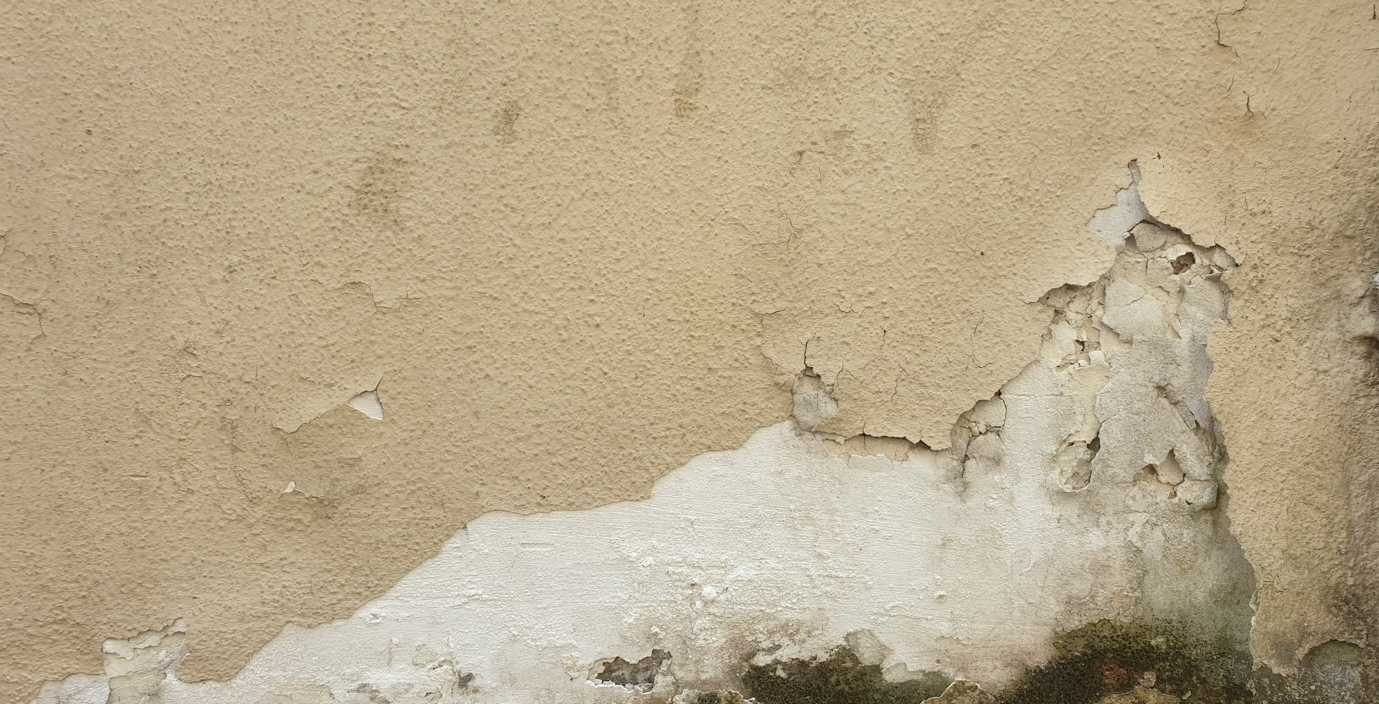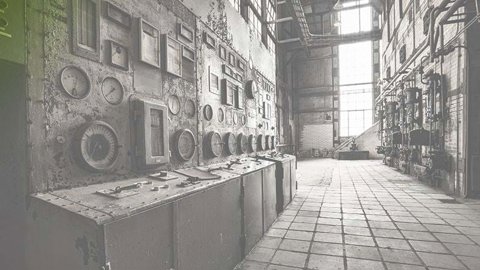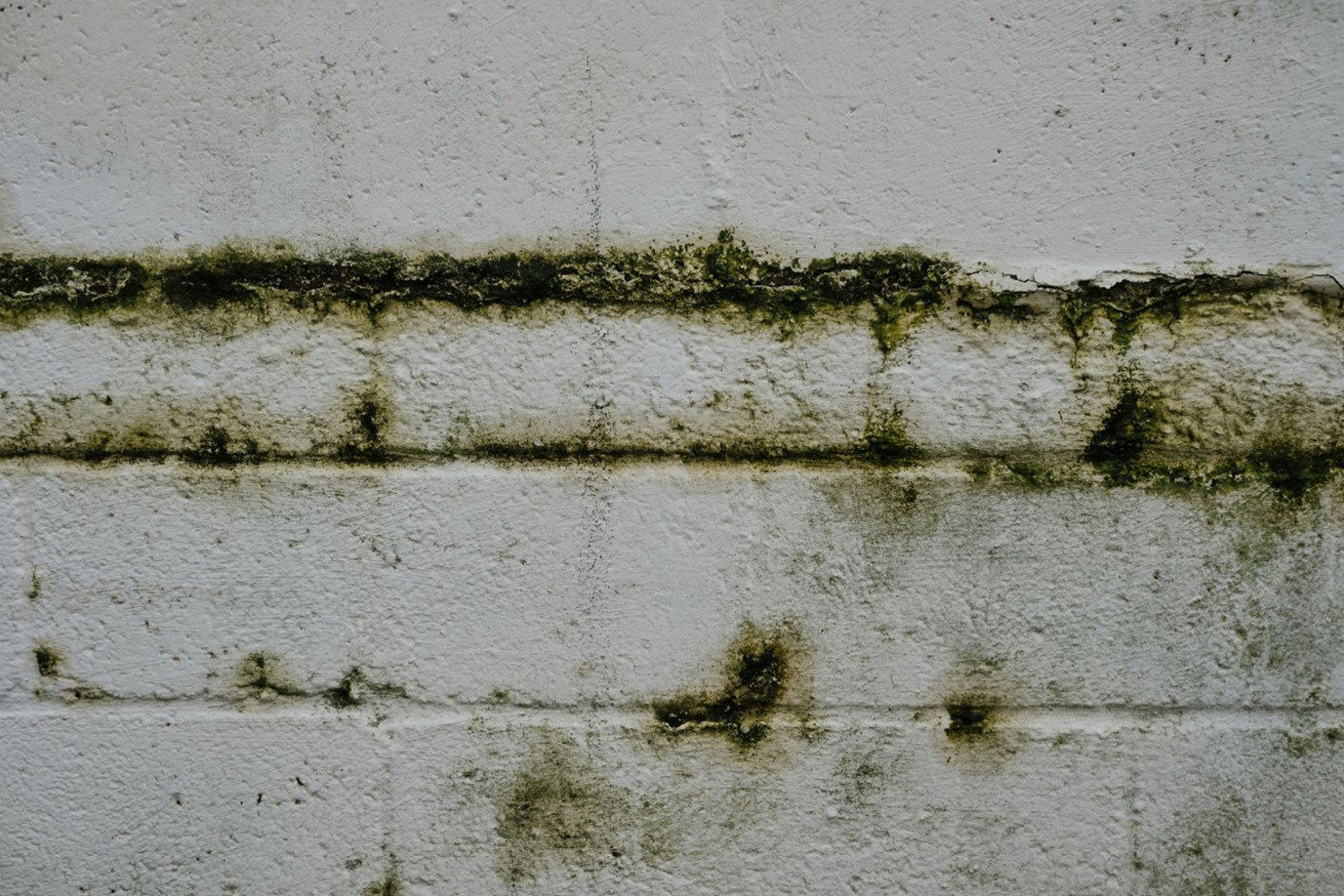How Does Damp and Mould Occur?
Damage
The most common cause of mould and damp is leaking pipes or damaged roofs or windows. Any kind of damage to the parts of your work building that aim to keep rain out will almost certainly cause mould and damp if not repaired quickly.
New Building
If you have moved into an office or workspace that was recently built, it is possible the building itself is still drying out and this can also be a cause.
Rising Damp
Another source of mould and damp is from what is called 'rising damp'. This is when water from the ground seeps up through the bricks and mortar of a building in a similar way to how a sponge soaks up surrounding water.
Inadequate Heating or Ventilation
Because mould and damp are often caused by too much condensation, if your work space is not sufficiently ventilated, the condensation can build up and eventually cause mould. The same goes for heating. Condensation is less likely to occur when a property is warmer and insulated properly, particularly on external walls as they will be a lot colder than internal walls.

How Does Mould and Damp affect Health?
If a place of work is damp for a prolonged period of time, mould can begin to grow on walls.
Moulds produce substances that can cause allergic reactions (these are also known as allergens). They contain irritants and sometimes, toxic substances. If these spores of mould are touched or disturbed and in turn, inhaled, it can lead to an allergic reaction.
If you have mould in your workplace, you may experience:
- Sneezing
- A runny nose
- Red eyes
- Skin rashes
- Breathing difficulties
Mould and damp can also exacerbate existing conditions such as:
- Eczema
- Asthma
- Any other respiratory conditions
What Can I Do about Mould in the Workplace?
Your employer has a legal responsibility to ensure the health and safety of their workers. They should be taking adequate measures to safeguard against the many damaging health effects of mould.
If you see any mould in the workplace or begin to experience some of the health problems mentioned, you should report the problem to your employer immediately.
Reporting the Mould:
Reporting the discovery of mould is the first step, and it aligns with the Health and Safety at Work Act 1974, a fundamental UK regulation. The Act places a legal duty on employers to ensure the health, safety, and welfare of employees, which includes providing a safe working environment. Inform your supervisor or manager immediately, and document the incident as part of your legal responsibility.
Those in Control of the Premises Should:
- Detect and locate the source of the moisture problem
- Remove any known mould infestations
- Control excessive moisture through effective ventilation
If you report mould in the workplace and nothing is done about it, you are within your rights to report your concerns to an enforcing authority. This could be the Health and Safety Executive (HSE), Local Authority or another enforcing authority.
The HSE has published a guide on whether the HSE is the correct enforcing authority for your situation that provides distinct lists on who to call.
Professional Assessment of the Mould in Your Workplace:
A professional mould assessment is essential. The Health and Safety Executive (HSE) provides guidance on indoor air quality and mould, emphasising the need for assessments to determine the extent and type of mould.
Remember to Prioritise Safety:
Under the Control of Substances Hazardous to Health Regulations 2002 (COSHH), it is important to prioritise safety when dealing with substances that can cause harm, including mould. Do not attempt to clean or remove the mould yourself, as disturbing mould can release harmful spores. This aligns with the COSHH regulation, which places responsibility on employers to protect employees from hazardous substances.
Safety Measures When Mould Is Present
To comply with COSHH and ensure the safety of employees, the provision of personal protective equipment (PPE) and respiratory protection may be necessary if employees are required to work in areas where mould is present or being removed.
Know Your Employment Rights:
Familiarise yourself with your rights as an employee under UK health and safety regulations. If you believe your employer is not taking appropriate action to address the mould issue, you have the right to raise concerns under various regulations, including the Employment Rights Act 1996 and the Public Interest Disclosure Act 1998.
Regulatory Agencies That Will Investigate Such Issues At Work:
The HSE, as the UK's primary regulator for workplace health and safety, enforces regulations and investigates issues in the workplace. If your employer is unresponsive to mould-related concerns, contact the HSE, as it plays a key role in ensuring compliance with UK workplace safety regulations.

Preventing Mould Growth in the Workplace
While it's crucial to know how to respond to mould when you find it, preventing mould growth in the first place is equally important. Here are some practical tips for maintaining a mould-free workplace:
Monitor Moisture Levels: Mould thrives in damp environments. Regularly check for and address any water leaks, seepage, or condensation issues in the workplace. Repair any leaks promptly, and ensure that areas prone to moisture, such as basements or storage rooms, are well-ventilated.
Control Humidity: Maintain indoor humidity levels within the recommended range of 30-60%. Dehumidifiers can be used to achieve and maintain this range, especially in areas susceptible to high humidity.
Proper Ventilation: Ensure good ventilation throughout the workplace. Use exhaust fans in kitchens, restrooms, and areas with higher moisture levels. Open windows when weather allows to improve air circulation.
Regular Cleaning: Encourage regular cleaning and maintenance of the workplace. Dust and clean all surfaces, including vents and air conditioning units. Pay special attention to areas where mould is more likely to form, such as around windows and in restrooms.
Reduce Clutter: Reducing clutter in storage areas and workspaces can improve air circulation and make it easier to detect mould growth. Keep desks, shelves, and storage areas well-organised.
Use Mould-Resistant Materials: Consider using mould-resistant building materials when renovating or constructing workspaces. These materials are designed to resist mould growth and can be especially beneficial in areas at risk.
Regular Inspections: Conduct regular inspections of the workplace for potential mould growth. Early detection can prevent a minor issue from becoming a major problem.
Emergency Preparedness: Have a plan in place for addressing water damage or flooding. Knowing how to respond quickly to these issues can prevent extensive mould growth.
Professional Maintenance: Consider regular professional maintenance of HVAC systems and air ducts to ensure they are clean and free from mould.
By incorporating these prevention strategies into your workplace, you can significantly reduce the risk of mould growth and create a healthier, more comfortable environment for all employees. Remember, mould prevention is not just about responding to issues when they arise; it's about taking proactive steps to minimize the conditions in which mould can thrive.
What Can Simpson Millar Do to Help?
If you are suffering from health problems that you believe are as a result of a work environment that is excessively damp or mouldy and your employer has done nothing to protect you from it, you could be entitled to compensation for damages.
Our Industrial Disease Solicitors have many years of experience providing legal advice for employees who have suffered at the hands of negligent employers and might be able to advise you on the next steps to take.
Mould and damp are something that must be taken seriously. It's very easy to let mould develop much further than it should. If it is dealt with quickly, it is unlikely to affect health.
Employers can be reluctant to tackle damp and mould because once you have attempted to reduce condensation, it can be very difficult and costly to deal with.
Be brave in situations where employers refuse to help. It is their responsibility to maintain your work space so that it is safe.
Mould in the workplace is not just a matter of cleanliness; it's a matter of legal compliance and employee well-being. By following the steps outlined in this blog and considering the relevant employment law regulations, you can ensure that your workplace addresses the mould problem effectively, prioritises employee health and safety, and complies with the law. Remember, a safe and healthy work environment is not just a matter of preference; it's a legal requirement in the UK.
If you are unsure whether your employer should be doing more, contact our Industrial Disease Solicitors for a free consultation.








